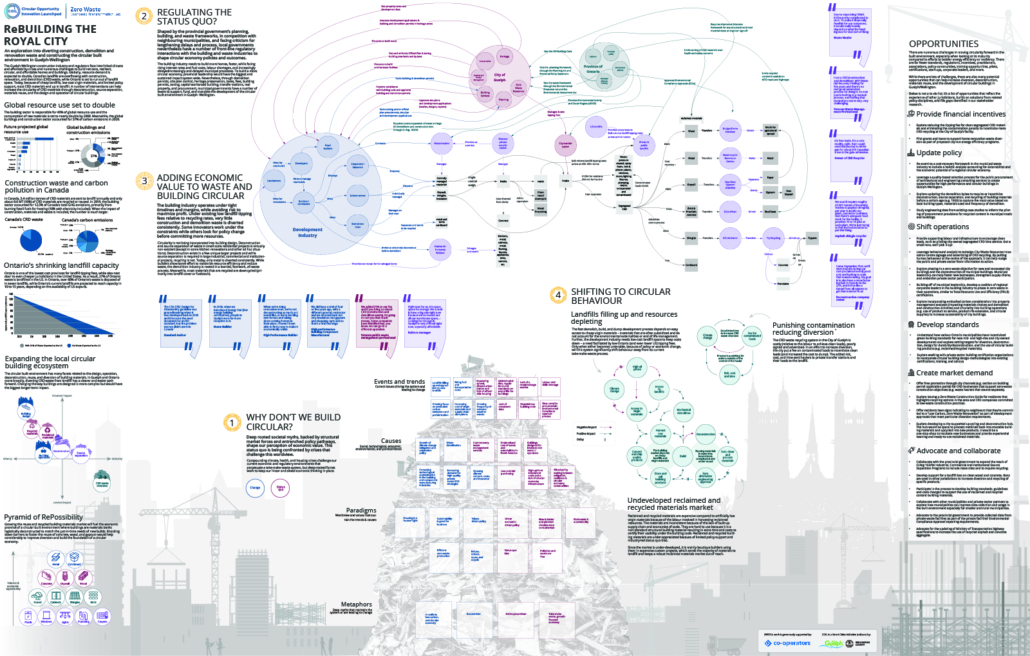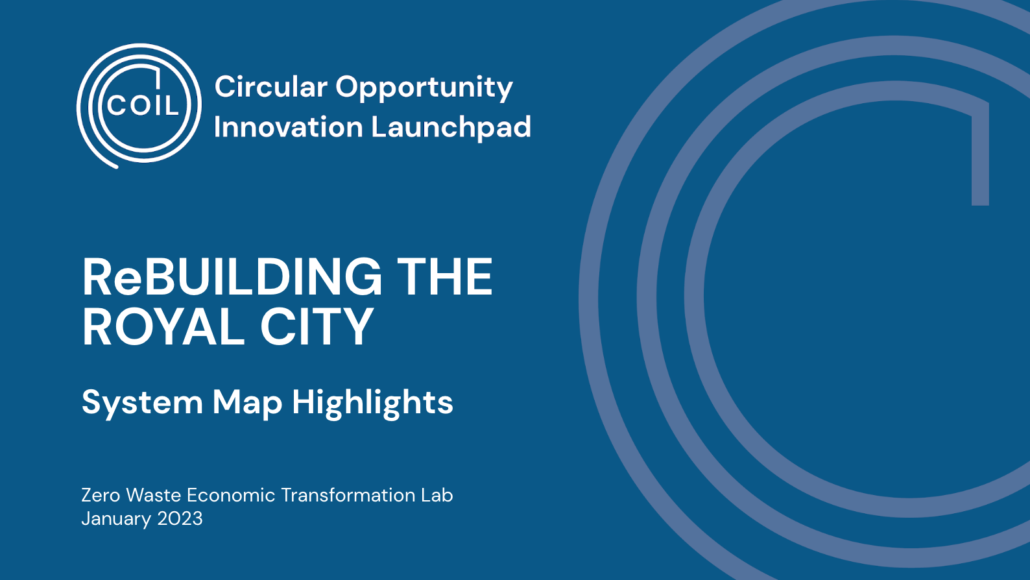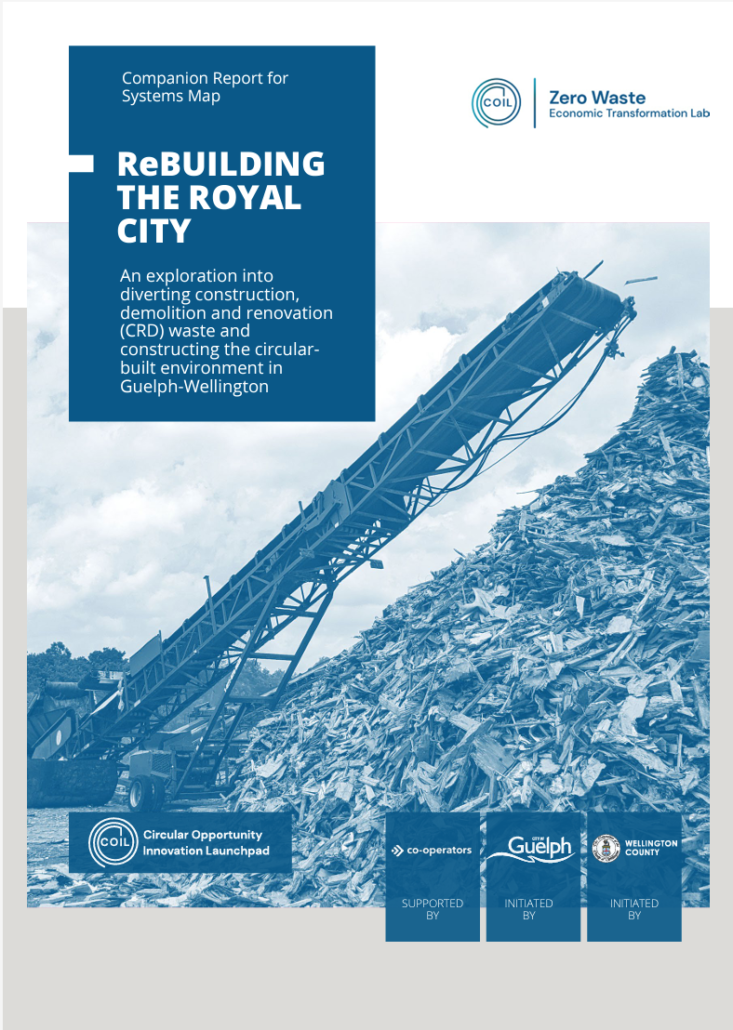Systemic Design Report Highlights Opportunity to Grow the Circular Built Environment in Guelph-Wellington
The Circular Opportunity Innovation Launchpad, run through the Smart Cities office at the City of Guelph, wanted to understand what are the main enablers, barriers, and norms to fostering the circular economy in the construction, demolition, and renovation industry in Guelph and Wellington County. By exploring a Systemic Design analysis to understand individual orientations, the regulatory context, and economic landscape, I uncovered opportunities that could help advance the circular economy.
My Process
- Literary Review: I explored and examined the ideas, systems, and decisions that underpin the current waste system in Ontario and the solutions proposed, debated, and implemented to fix the system.
- In-depth Interviews: I conducted over 30 interviews with experts, waste management professionals, architects, engineers, contractors, builders, waste haulers, recyclers, upcyclers, officials, manufacturers, associations, deconstruction and reuse professionals, and more.
- Site Visits: I toured multiple waste and recycling facilities to understand how the current system operates.
- Systemic Design Tools: I used several Systemic Design tools based on research, interviews and feedback to enhance understanding and storytelling (Systemigram, Causal Layered Analysis, Causal Loop Diagram, etc.)
ReBuilding the Royal City Systems Map
Systems Map Presentation
Companion Report to Systems Map
Key Findings
- With available options for recycling, less than one fifth of Canadian CRD materials are diverted, despite data showing that number can be reversed.
- Diverting CRD waste from landfill has a clearer and easier path forward since recycling solutions exist in the market, but many of those existing solutions downcycle the materials.
- Source separation is required to extract the highest amount of clean materials, reduce contamination, and increase the likelihood of upcycling or reuse.
- When the development industry leverages material salvage, it is to limit waste rather than for the economic benefit of the materials or the tax receipt.
- Reclaimed and recycled materials are inconsistent, hard-to-use and under-appreciated and as a result are limited to expensive custom projects.
- Circular building design and operation are basically non-existent in the region, but would have a greater long-term impact on changing the system.
- Cost signal work. Knocking down barriers to foster the reuse of concrete, clean wood, and gypsum would improve diversion rates and help build a reclaimed materials market.
- There are few incentives, regulations, or building standards related to deconstruction, material reuse, and circular building design, and operation.
- Provincial leadership would have the biggest impact system wide, but local governments have many front-line regulatory interactions with the development and waste industries.
- There are businesses working under these tight margins operating using circular processes and developing circular products.
- Cheap landfills, low-cost virgin materials, and limited policy support drive most CRD waste to landfill.
- A fee on contaminated CRD loads at the City of Guelph transfer station to incentivize clean loads has done the opposite.
Result
The Smart Cities office was very satisfied with the analysis and the opportunities presented. They have begun implementing interventions based on the findings and also use the map for storytelling and fundraising.





